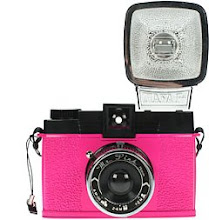 Temple
TempleIf you haven't met Yellena James, allow me to introduce her to you. Yellena is a 29-year-old artist who lives on the Central Oregon Coast with her musician husband and two cats, Masha (good kitty) and Fisher (bad kitty). Yellena explores flow, movement and organicity in her extravagantly fanciful creations. She loves to invent new relationships between shapes and colors from those that exist naturally.
 Flirt
FlirtYellena was born in Sarajevo and lived there until the end of the civil war, in 1995. During the war, she would sneak past snipers to attend a high school that was dedicated to the arts. That's where she grew passionate about her own art. The school had electricity most of the time—which meant heat and music—and like-minded people who just wanted to create and get away from the horrors of the world outside. After moving to the United States (Orlando, FL), Yellena received a BA in graphic design from UCF and eventually made her way to the West Coast.
 BreezeFrom a (pilfered) interview on etsy, used here with Yellena's permission
BreezeFrom a (pilfered) interview on etsy, used here with Yellena's permission:
What is the first thing you can remember making by hand? How and why did you make it?
When I was seven years old, I was in a city-wide competition to do a drawing that had a '21st-century' theme. I drew a bunch of robots wearing aprons and baking cookies. I wish I still had that drawing. It took second place.
 Magic
MagicWhat inspires you? Where do your ideas come from?
I think that my works come from a desire to put something in front of myself that I would really want to look at later. Inspiration is everywhere: the works of other artists, books, design blogs, catalogs, my husband, my sister (danca
dot etsy
dot com), my friends, vintage patterns, fine-point pens, velvet paper, felt, deep-sea creatures, Julie Mehretu, music, cacti, moss, wallpaper, micro-cosmos, macro-cosmos, pebbles, plants, animals, the universe. That's about it.

What are your favorite materials?
Pens, inks, markers, good quality paper. I also love to work with acrylics. I could spend hours in an art supply store, just touching everything.
 Allusion
Allusion:
yellena's shop,
blog,
gallery












































